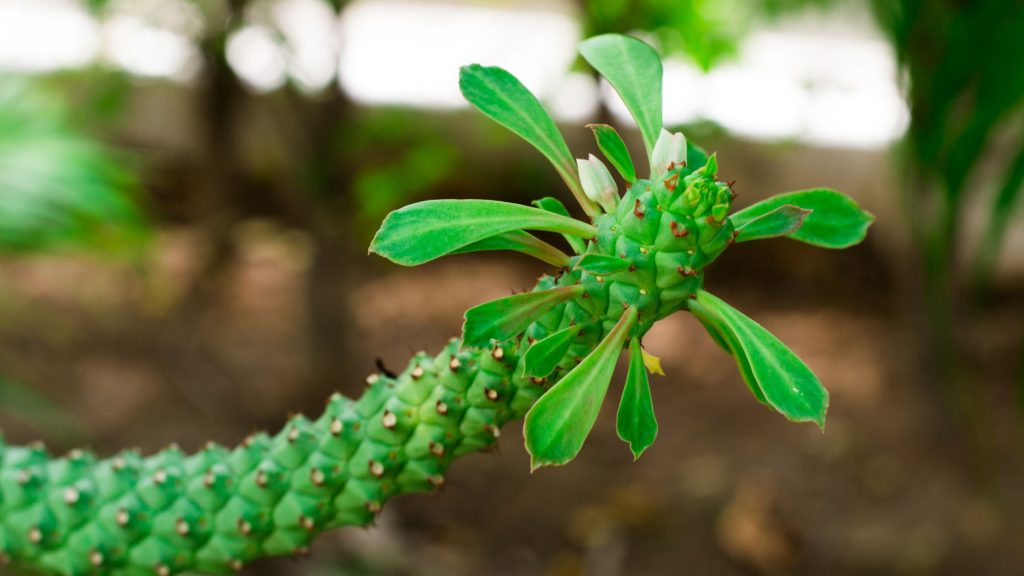You can tell what is a rat tail cactus by the spines, which are short and fine, and the plant’s stems are long and trailing. In general, the plant is green when young, but its stems turn a nearly beige color as it matures. Flowers are uncommon, but when they do appear, they are a stunning shade of pink or red.
The rat tail cactus plant is a succulent that is indigenous to the United States, more specifically to certain regions of Missouri and Arkansas.
This cactus has tubular growth but a ratty tail on one end of the plant as an added feature.
The foliage of this Rat Tail Cactus is known for its attractive appearance and the vivid colors of its petioles.
The different types of rat tail cactus are ideal for succulent enthusiasts who want to bring an interesting plant into their home landscape or cabinet and already have a succulent collection.
Table of Contents
What Is A Rat Tail Cactus?
The Rat Tail cactus growth rate can be quite astounding, given that it starts out so small.
The plant typically grows to be about 2-3 feet tall and has small, white flowers that bloom in the springtime.
The Rat Tail cactus is not only an interesting-looking plant, but it is also quite easy to care for. These cacti are very drought-tolerant and can even thrive in sandy or rocky soil.
They prefer to be in bright, direct sunlight but can also do well in partial shade. When watering your rat tail cactus, make sure to allow the soil to dry out completely between waterings.
If you are looking for a unique and low-maintenance plant to add to your collection, the Rat Tail cactus is a great option!
Where Do Rat Tail Cacti Come From?
The Rat Tail cactus is a type of cactus that is native to Mexico. The Rat Tailcactus is a member of the genus Cereus, which contains around 30 different species of cacti.
The rat tail cactus is one of the more popular members of this genus due to its unusual appearance.
The rat tail cactus grows in various habitats but is most commonly found in desert regions. It prefers hot, dry conditions and can be found at elevations up to 5,000 feet.
The Rat Tail cactus is a succulent plant, meaning it stores water in its leaves and stems. This adaptation helps the plant survive in its arid environment.
The rat tail cactus is not considered to be endangered, but it is threatened by habitat loss due to human activity.
If you live in an area where the rat tail cactus grows naturally, you can help protect this plant by avoiding activities that disturb its natural habitat.
How Does The Rat Tail Cactus Grow?
The rat tail cactus grows by producing long, thin stems that can reach up to 20 feet in length. The stems are covered in small, sharp spines that protect the plant from predators.
The rat tail cactus produces small, white flowers that bloom in the springtime. Small, red fruits follow these flowers that birds and other animals eat.
You can check out the following video to learn how to transplant a rat tail cactus.
What Are The Benefits Of Growing A Rat Tail Cactus?
There are many benefits of growing a Rat Tail cactus. For one, it is an easy plant to care for and does not require much attention. Additionally, the plant is known to be drought-tolerant and can survive in hot, dry climates.
Another benefit of the rat tail cactus is that it is known to be a slow grower, so it will not take over your garden or yard.
Finally, a rat tail cactus produces beautiful flowers in various colors, including white, pink, yellow, and red.
When caring for a Rat Tail cactus, it is important to give the plant plenty of light. The rat tail cactus does best in bright, direct sunlight.
If you are growing the plant indoors, place it near a south-facing window. It is also important to make sure that the plant has good drainage.
The rat tail cactus should be watered about once a week, allowing the soil to dry out completely between watering. During the winter months, you can reduce watering to every other week.
It is also important to fertilize the rat tail cactus about once a month during the growing season. Use a balanced fertilizer that is specifically designed for cacti and succulents.

Be sure to follow the directions on the fertilizer package so that you do not over or under-fertilize the plant.
Although the rat tail cactus is generally considered to be safe, there are some dangers associated with this plant. One of the biggest dangers is that the rat tail cactus can cause skin irritation.
If you come into contact with the bristles on this cactus, you may experience redness, itching, and swelling. If you have a reaction to the rat tail cactus, it is important to seek medical attention immediately.
Another danger associated with the rat tail cactus is that it can be poisonous if ingested. This plant contains chemicals that can be harmful if consumed, so it is important to keep it away from children and pets.
If you or someone you know ingests this plant, it is also important to seek medical attention immediately.
Overall, the rat tail cactus is a relatively safe plant to have in your home. However, you should be aware of some risks associated with this plant.
If you have any concerns about these risks, it is always best to consult with a medical professional before bringing this plant into your home.
Conclusion
The Rat Tail cactus is a type of cactus that is native to the deserts of Mexico. It is a fast-growing cactus that can reach up to 10 feet in height.
The rat tail cactus is a popular plant to grow indoors and is relatively easy to care for.
It is important to note that the rat tail cactus can be poisonous if ingested, so it is important to keep it out of reach of children and pets.
You can find rat tail cactus for sale on Amazon.
Recent Posts
Have you found yourself wondering, 'why is my bamboo growing so slow?' Despite the fact that bamboo plants are remarkably fast-growing, it can sometimes take months (or even years!) to see any signs...
Miracle-Gro is a huge help when you are trying to get decent yields out of your plants or if you want them to thrive. However, you may have noticed that a single dose of fertilizer does little to...
